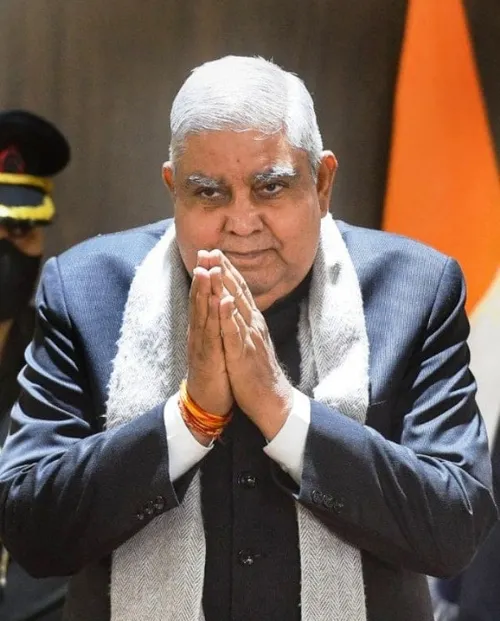Malaysia Airlines is witnessing a surge in passenger traffic from India, with its reach going beyond metros to tier-two cities. The airline currently operates over 76 weekly flights across 10 cities. In an interaction with businessline, Dersenish Aresandiran, Chief Commercial Officer of Airlines at Malaysia Aviation Group, says the passenger traffic is up by 30 per cent, with healthy load factors driven by business and leisure travel.
How do you see the growth in the Indian market? What are your expectations this year?
We remain committed to expanding our footprint, particularly in emerging tier-two markets. The swift launch of Kolkata, following the approval of bilateral rights, underscores our agility and commitment to growth. Additionally, our code-share with IndiGo is also instrumental in enhancing reach across 16 additional cities, offering Indian travellers greater choice and seamless connectivity than ever before.
From Kerala, Malaysia Airlines currently operates 11 weekly flights to Kuala Lumpur—seven from Kochi and four from Thiruvananthapuram. Starting June 6, we will increase the frequency from Thiruvananthapuram– marking a significant ramp-up since the resumption of services post-pandemic.
The Kuala Lumpur frequency from Thiruvananthapuram will increase to five times weekly, offering greater flexibility and more options for both leisure and business travellers. This brings our total weekly operations from Kerala to 12 flights.
India continues to be a key growth market for us, especially as we strengthen travel flows between South Asia and the Australia–New Zealand region. We are significantly increasing connectivity to key Australian cities—Melbourne and Sydney will go up to 21x weekly each, and Auckland to 10x weekly from October, and we are also launching new flights to Brisbane up to 5x weekly from November. Travellers from Kerala, including Kochi and Thiruvananthapuram can conveniently connect to these destinations via Kuala Lumpur.
We are also expanding reach across India through our code-share partnership with IndiGo — growing from 10 to 16 cities and adding key feeder points such as Goa, Varanasi, Patna, Bhubaneswar, Visakhapatnam, and Tiruchirappalli.
What is Malaysia Airlines growth in passenger traffic from the Indian market, and what are your projections?
India continues to be a standout growth market for Malaysia Airlines as passenger traffic has already surpassed the pre-pandemic levels by 30 per cent. For FY25, we are targeting 1.3 million passengers — a projected 14 per cent year-on-year increase. Load factors remain consistently strong, averaging 88 per cent in metro cities and 86 per cent in tier-two markets.
This momentum is driven by the addition of four new routes post-pandemic, the strategic partnership with IndiGo, and continuous enhancements to the on-board experience — such as the introduction of the A330 neo and 737-8 aircraft featuring complimentary Wi-Fi and elevated dining curated by The Oberoi Group.
What is your growth in the Kerala market?
Kerala remains a strategically important market with robust and sustained demand across the VFR (visiting friends and relatives), leisure, and spiritual travel segments. Our routes to Kochi and Thiruvananthapuram continue to perform strongly, with average load factors around 85 per cent, peaking at up to 95 per cent during high seasons — a clear testament to the region’s growing potential.
Beyond the numbers, Kerala offers an unmatched tourism experience — its cultural richness, wellness offerings, and scenic retreats align perfectly with what travellers from Asia and the Pacific are increasingly seeking. We are working closely with key travel partners across our network to position Kerala as a must-visit destination and to drive stronger inbound flows from the East.
Can you comment on Kerala’s Look East policy?
The Look East initiativeby the Kerala Government is designed to deepen regional tourism links, especially between Kerala and key East Asia-Pacific markets. This aligns well with our network strategy, as we serve as a gateway to Asia and beyond, connecting passengers from across the region to Kerala via our Kuala Lumpur hub.
By connecting Kerala to our extensive Asia-Pacific network, we support the State’s ambition to attract high-value travelers seeking wellness, cultural, and MICE experiences. The Look East policy complements our growth strategy for the route, positioning Kerala as a premium destination in the region.
Any plans for a tie up with Kerala Tourism?
Yes, we have recently partnered with Kerala Tourism under the Look East campaign to boost inbound tourism from East Asia. We launched a high-impact Mega FAM trip, bringing nearly 100 travel agents and influencers from eight key markets — including China, Japan, Australia, Vietnam, and Malaysia — to experience Kerala’s unique cultural and natural offerings first hand.
This is just the beginning. We see significant long-term potential in strengthening this partnership and are currently exploring future initiatives such as joint digital campaigns, co-branded content, and curated wellness packages to further position Kerala as a top destination across our network.
Any plans to cater to rising pilgrim travel to India from Malaysia?
We understand the deep cultural and spiritual ties between Malaysia and South India. To better serve this segment, we offer direct connectivity to Kochi and Thiruvananthapuram — both key gateways to Sabarimala. Our flight schedules and on-board offerings, including vegetarian meal options and accessibility support, are thoughtfully tailored to meet the needs of spiritual travellers.
Beyond Sabarimala, we also recognise the spiritual significance of other destinations across Kerala — from the revered Sree Padmanabhaswamy Temple to Guruvayur, Aranmula, Attukal, Chottanikkara, and the Jewish Synagogue in Kochi. Our goal is to support and simplify spiritual journeys for all travellers by providing comfort, convenience, and seamless service.
Anurag Dhole is a seasoned journalist and content writer with a passion for delivering timely, accurate, and engaging stories. With over 8 years of experience in digital media, she covers a wide range of topics—from breaking news and politics to business insights and cultural trends. Jane's writing style blends clarity with depth, aiming to inform and inspire readers in a fast-paced media landscape. When she’s not chasing stories, she’s likely reading investigative features or exploring local cafés for her next writing spot.






